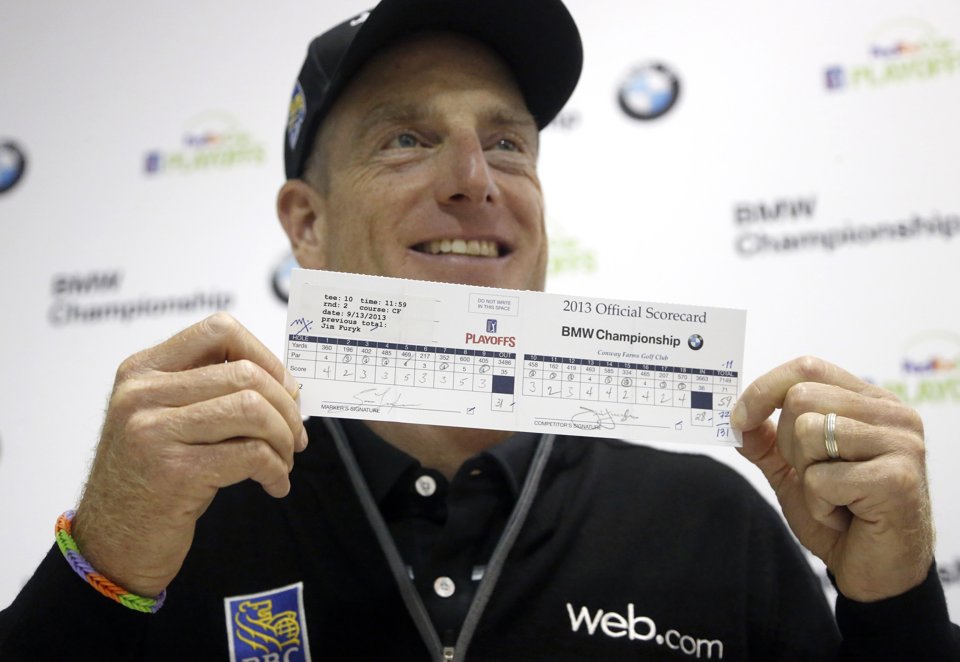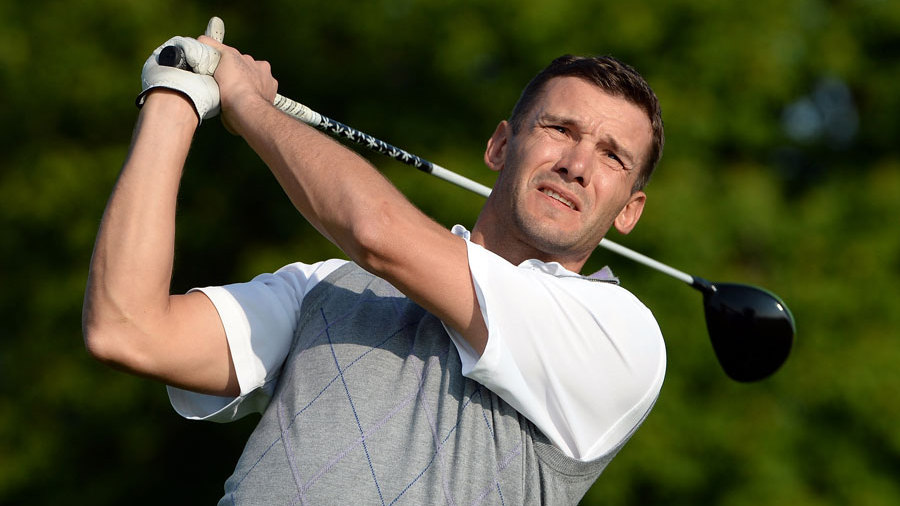From the Sublime to the Ridiculous
Individual scorecards rarely receive the level of public scrutiny that they did last week. At one end of the scale, the phenomenal efforts of Jim Furyk at the BMW Championship in Chicago on Friday lead to only the sixth ever sub -60 round on the PGA Tour. With 11 birdies and an eagle, Furyk’s score of 59 came about as close to golfing perfection as humanly possible – even if, amazingly, there was still room for one bogey blemish on the card!
 At the opposite end of the spectrum the merits of the ‘Sponsor’s Invite’ were being hotly debated at the Kharkov Superior Cup in Ukraine. No fewer than six golfers registered two consecutive rounds in the 90s at this Challenge Tour event, with one player scoring 109 before withdrawing after the first round. I’m sure this wasn’t the first time in professional golfing history that a player has carded three figures, but the event was given increased (if a little notorious) exposure owing to the fact that former footballer Andriy Shevchenko and tennis player Yevgeny Kafelnikov were in the field as Sponsor’s invites. I’m sure the centurion won’t be thanking them for cranking up the wattage of the media spotlight.
At the opposite end of the spectrum the merits of the ‘Sponsor’s Invite’ were being hotly debated at the Kharkov Superior Cup in Ukraine. No fewer than six golfers registered two consecutive rounds in the 90s at this Challenge Tour event, with one player scoring 109 before withdrawing after the first round. I’m sure this wasn’t the first time in professional golfing history that a player has carded three figures, but the event was given increased (if a little notorious) exposure owing to the fact that former footballer Andriy Shevchenko and tennis player Yevgeny Kafelnikov were in the field as Sponsor’s invites. I’m sure the centurion won’t be thanking them for cranking up the wattage of the media spotlight.
Personally, I don’t agree with invitations being thrown to otherwise ineligible players. OK, I can understand the argument for including Shevchenko and Kafelnikov in a country such as Ukraine, where golf is a developing sport and including two national legends would only serve to raise the profile of the event, and indeed the game. If evidence were needed, for a Challenge Tour the build up in the national newspapers last week was pretty unique, with Shevchenko’s debut on the professional golfing scene being the main focus of coverage. The Dutch Open on the European Tour hardly got a mention as a result, which just goes to show the power of celebrity yet again.
On the flip side though, I tend to feel that wherever a tournament is being played, it needs to reflect the standards expected every other week. For the Challenge Tour the purpose is to progress talented players to a level where they can comfortably ply their trade with the very best in the world on the European Tour. The Kharkov Superior Open was an event where Nick Dougherty, Oliver Wilson and Kenneth Ferrie were all amongst the competitors. It shouldn’t be seen as a glorified pro-am.
 Shevchenko is a very good golfer, but by his own admission he’s a two handicap and not a professional. His score of +26 for two rounds only emphasised that, but +26 was by no means bottom of the pile. Indeed, the only mention of the eventual winner (Dan Huizing of the Netherlands) occurred when journalists compared his score to those players at the foot of the leaderboard.
Shevchenko is a very good golfer, but by his own admission he’s a two handicap and not a professional. His score of +26 for two rounds only emphasised that, but +26 was by no means bottom of the pile. Indeed, the only mention of the eventual winner (Dan Huizing of the Netherlands) occurred when journalists compared his score to those players at the foot of the leaderboard.
Such was the bewilderment at the scores of various invited players, Alain de Soultrait, European Challenge Tour Director, was forced to clarify the Tour’s position on national invites (read his statement here). In it, he mentions how the ethos of the Challenge Tour is to give players experience against top professionals which will help them grow and develop as golfers. I can’t argue that the sentiment might be correct, but I fail to see how that kind of experience is going to do anything other than demoralise participating local professionals and amateurs. Lambs to the slaughter probably sums it up best.
I absolutely support the idea of invitations, and developing talented players, but for my money the Challenge Tour has to find a way of ensuring that the standard of golfers that benefit from such offerings is close to that of the regular competitors on the Tour. OK, they won’t be as good or as practised, but golfers with a decent shot at a professional career don’t shoot over a hundred when others are shooting perfectly good scores. I am not sure some of the publicity last week didn’t serve to damage the Tour. Celebrity golfers and others with dodgy credentials doesn’t shout of the ‘professionalism’ of the Tour, and I am sure hacks off a few very good young pros unable to play as a consequence.
The FedEx Cup Playoffs and the Challenge Tour might be worlds apart, but the gulf in abilities isn’t fairly represented when the press compare scorecards of 59 and 109. The Challenge Tour is better than that, and it was a shame to see its rare place in the spotlight as a source of ridicule.